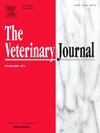羊驼(Vicugna pacos)的蠕虫感染、意大利南美骆驼科动物的饲养和蠕虫控制措施。
IF 3.1
2区 农林科学
Q1 VETERINARY SCIENCES
引用次数: 0
摘要
最近羊驼养殖在全球范围内的扩张,包括在意大利,引起了人们对这一物种越来越大的兴趣,因此有必要进行进一步的研究,以支持它们的健康和管理。胃肠道蠕虫是主要的健康问题之一,它导致严重的疾病,影响福利和生产力。在欧洲,关于南美骆驼科动物(SACs)寄生虫感染的数据仍然有限。本研究旨在通过结构化问卷调查和coproology分析,评估意大利羊驼寄生虫感染的流行、分布和危险因素,并对羊驼的饲养和寄生虫防治措施进行评价。收集了1296只羊驼的粪便样本,并通过Mini-FLOTAC、Baermann和沉淀技术进行了分析。以胃肠道圆形(GIS)型虫卵检出最多(54.0%),其次为线虫(21.2%)、毛线虫(12.6%)、巴氏线虫(7.6%)、毛线虫(6.7%)、念珠菌(3.2%)、树突双子囊(2.5%)、圆线虫(0.5%)、双子囊(0.2%)。2岁以下的羊驼在所有寄生虫组中感染的风险都较高。中部、南部和岛屿地区的孳生与几乎所有的寄生虫感染都有显著关系。暖季与GIS、线虫和滴虫感染显著相关。BCS < 3的羊驼感染毛线虫和毛细线虫的风险较高。问卷调查结果(n= 104)显示了对粪便清除和寄生虫学监测的重视。这项研究提供了意大利羊驼蠕虫感染的第一个数据,显示了广泛的物种多样性。芬苯达唑和伊维菌素的广泛使用引起了人们对潜在的驱虫耐药性的担忧。本文章由计算机程序翻译,如有差异,请以英文原文为准。
Helminth infections in alpacas (Vicugna pacos), husbandry and worm control practices in South American Camelids in Italy
The recent global expansion of alpaca breeding, including in Italy, has driven growing interest in this species, making further research necessary to support their health and management. Gastrointestinal helminths are among the main health concerns, causing severe disease that affects welfare and productivity. In Europe, data on helminth infections in South American Camelids (SACs) are still limited. This study aimed to assess the prevalence, distribution, and risk factors for helminth infections in alpacas in Italy, and evaluate the husbandry and worm control practices through a structured questionnaire and coprological analyses. Individual fecal samples were collected from 1296 alpacas and analysed by the Mini-FLOTAC, Baermann, and sedimentation techniques. Gastrointestinal strongyle (GIS) type eggs were the most frequently detected helminths (54.0 %), followed by Nematodirus spp. (21.2 %), Trichuris spp. (12.6 %), Nematodirus battus (7.6 %), Capillaria spp. (6.7 %), Moniezia spp. (3.2 %), Dicrocoelium dendriticum (2.5 %), Strongyloides spp. (0.5 %), and Dictyocaulus spp. (0.2 %). Alpacas < 2 years were at higher risk of infection for all helminth groups. Breeding in central, southern, and insular area was significantly associated with almost all helminth infections. The warm season was significantly associated with GIS, Nematodirus spp., and Trichuris spp. infections. Alpacas with a BCS < 3 had a higher risk for Trichuris spp. and Capillaria spp. infections. Questionnaire responses (n = 104) revealed great attention to dung removal and parasitological monitoring. This study provides the first data on helminth infections in alpacas in Italy, showing wide species diversity. The use of fenbendazole and ivermectin was widespread, raising concerns about potential anthelmintic resistance.
求助全文
通过发布文献求助,成功后即可免费获取论文全文。
去求助
来源期刊

Veterinary journal
农林科学-兽医学
CiteScore
4.10
自引率
4.50%
发文量
79
审稿时长
40 days
期刊介绍:
The Veterinary Journal (established 1875) publishes worldwide contributions on all aspects of veterinary science and its related subjects. It provides regular book reviews and a short communications section. The journal regularly commissions topical reviews and commentaries on features of major importance. Research areas include infectious diseases, applied biochemistry, parasitology, endocrinology, microbiology, immunology, pathology, pharmacology, physiology, molecular biology, immunogenetics, surgery, ophthalmology, dermatology and oncology.
 求助内容:
求助内容: 应助结果提醒方式:
应助结果提醒方式:


